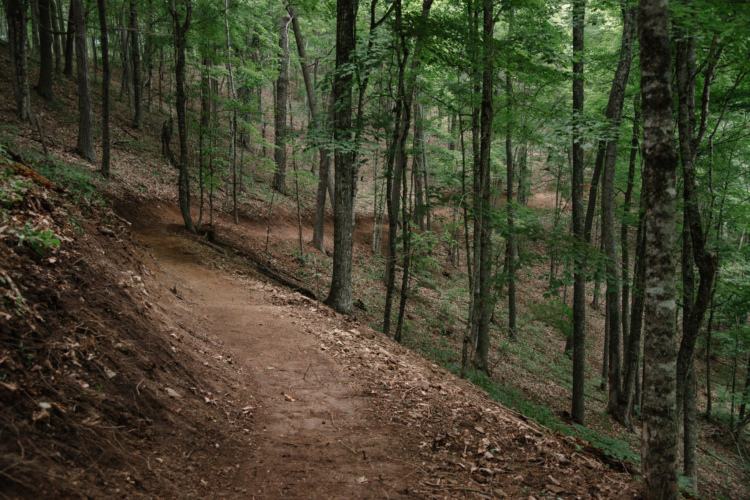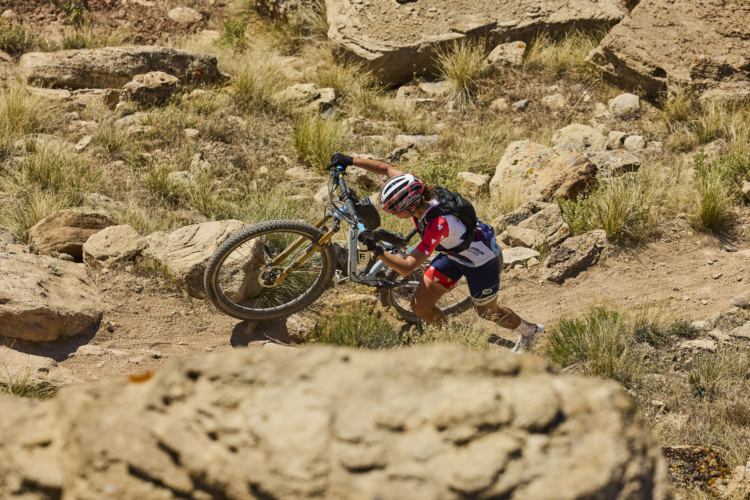Formula started producing motorcycle brakes and wheels in 1987. By 1993 they were the first to produce and distribute a disc braking systems for mountain bikes and they’ve been refining their MTB products ever since. The Formula RX brake set is the perfect example of that commitment.
Borrowing technology from Formula’s top dog THE ONE and R1 brake sets, the RX is a pared down, less expensive alternative(MSRP from about $189.00 each). The first thing you’ll notice is the RX calipers are not forged like THE ONE and R1 calipers and the RX features a master cylinder with a single bleed port (the other brakes feature two). While those features are nice to have, the tradeoff is a higher price for the high end brakes. Fortunately these differences don’t make the RX brakes any less capable for the XC to light freeride mountain biker.
Formula RX brakes have some really cool features that should pique any rider’s interest. For starters, the brake caliper is a one piece design which makes it relatively lightweight and stiff. The one piece design also supports the perfect alignment of both cylinder bores which ensures even pad contact and rotor wear.
Stopping force is generated by two 22mm pistons. With the RX brakes you can change up the pads without removing the caliper from the bike which is actually my favorite feature. The caliper is equally advanced in design, using a radial cylinder and integrated high capacity reservoir (more fluid = longer fluid life). The caliper can also be used on either side of the bike thanks to its flip-flop design. The weight of each unit including a 160mm rotor is 351g which is a decent weight considering the R1 tips the scales at 270 grams – not too far off.
Installation and Configuration
When ordering these brakes, be sure to get the correct hose length and adapter for your intended application. Because the RX brakes can be used in a wide variety of conditions, follow this simple guideline: XC riders will do well with 160mm rotors front and rear; trail riders should use 180mm front and 160mm rear; and all-mountain (enduro) or light freeride folks may want to consider the 203mm up front and the 180mm rear. On my AM bike I went with a 203mm disk on the front and 180mm disk on the rear and the installation only took a few minutes – nothing too strenuous.
When installing items like brakes, be sure to follow all safety precautions as well as all the included instructions. Most importantly, use a torque wrench when installing any brake set. If you’re using carbon components like a carbon frame or carbon bar, do not even consider installing these (or any other) brakes without a torque wrench. All the proper torque values can be found in the instructions. The last thing you want to do is crush your tubes by over-torquing. I also recommend turning your handlebars to their limits carefully after installing the brake levers. Make sure that the lever blades don’t strike your top tube.
On the trail
Out at Kelso and a “secret” spot about 40 minutes from my place (my new favorite place for testing), I did the usual routine of breaking in the pads. This involves stopping with medium force about 20 – 30 times on straight, level ground followed by riding with a finger on the brake to generate some friction. Once the pads are burnished in and seated nicely, I really hit the trails hard.
The first thing I noticed during my test was the nice, crisp feeling of the brake lever. Even using one finger on the lever I got decent force along with a comfortable feel to the brake. The lever action is silky smooth with no hang-up whatsoever and there’s no excessive lever travel with the RX. On a full squeeze the lever blade was just about parallel with my handlebar, right where it should be, and felt rock solid – not spongy at all. Lever position is adjustable with a 2mm allen key.
On the rougher side of the trails with steeper descents and rocky, rooted areas I got a good measure of how well the RX brakes perform. On steep descents I found these brakes brought me back to sane speeds quickly, but the stock organic pads needed to heat up a touch. Unlike some other braking systems, these brakes didn’t pop my eyes out of their sockets on short stops but their performance was pretty damn close. The RX brakes offer more than enough braking force for your AM bike or Trail bike.
I also really enjoyed the modulation on the Formula RX brakes. These babies came on gradually with consistent braking force and released pretty quickly without a hint of pad drag. Running these brakes with sintered pads rather than the stock organic pads should increase stopping power even more. In low temperatures and dry conditions the brakes didn’t make a sound.
Overall the Formula RX is a decent MTB brake set with good power and excellent modulation. For those who plan to shuttle these brakes I say switch up the pads to sintered but for those who will be riding technical trails the RX brakes are good to go. The performance chart below is based on using the stock organic compound pads; sintered pads would add another point on braking levels.
Technical data from FORMULA:
- Radial master cylinder
- High capacity, integrated reservoir
- Removable handlebar clamp
- Flip-flop design
- 1-piece caliper design with 22mm pistons
- Post mount
- Top loading pads
- Matte black / Gloss White
- Organic pads
- 351g complete with 160mm rotor and hardware
Thanks to the folks at Formula for providing the RX brakes for review.













